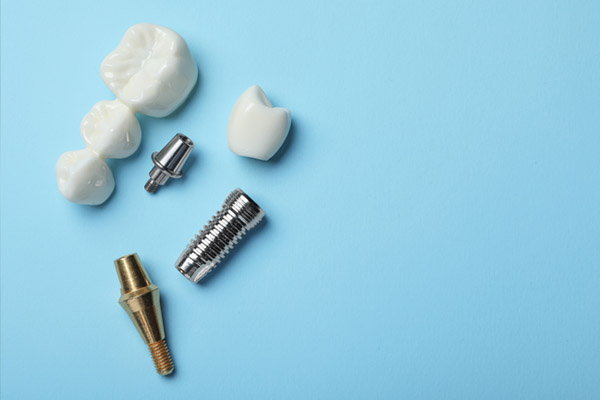What to Expect at a Comprehensive Gum Exam from a Periodontist

A periodontist will examine your complete medical and dental history on your first visit to the office. This is to check if you react to specific medications and have any pre-existing disorders impeding your dental care. Your periodontist will then perform a comprehensive gum examination to look for signs or symptoms of illness.
In certain situations, periodontal disease may be too advanced for regular cleaning. The periodontist may suggest a different treatment to eliminate the infection and restore oral health quickly and painlessly.
The comprehensive gum exam
Most patients know the importance of regular visits to the dentist for a checkup and cleaning to maintain excellent oral health. These checkups, however, do not check for indications of periodontal disease alone. During the comprehensive periodontal examination, the periodontist will evaluate the following areas.
The teeth: The dental specialist will check the teeth and any existing restorations, such as dental fillings, dental implants, crowns, and dentures. During the dental exam, they will also review how the teeth are aligned and their proximity to each other.
Plaque check: The level and location of plaque and tartar on the teeth and gums will be analyzed.
The gums: The dentist will insert a dental probe into the gap between the teeth and gums to determine the depth of periodontal pockets and check the level of the gums' attachment to the teeth. They will note and record any gum bleeding or irritation that happens throughout the probing process.
Bite check: The dentist will examine the patient's bite, otherwise called occlusion. They will explore how the teeth align and search for evidence of tooth movement or loss of teeth while the patient bites down. This is critical because loose or shifting teeth can indicate periodontal disease.
The bone structure: Since periodontal disease can affect the bone around the oral cavity, the dentist will examine the structures supporting the tooth. X-rays may be used to assess the quality of bone in the upper and lower jaws and identify if the patient has experienced bone loss.
Risk factors
The dentist will also want to know the patient's risk level for periodontal disease. This often entails asking questions about common risk factors, such as age, tobacco use, whether a relative has gum disease, and other systemic conditions contributing to gum disease, such as diabetes or cardiovascular disease.
Following the comprehensive gum exam, the dental professional will discuss their discoveries with the patient and clarify whether treatment is required. This gives patients the chance to ask any questions about the evaluation, the results, or anything else related to their dental health.
Understanding the outcome of an examination
A person's gums will not bleed if they have healthy gum tissue. Therefore, no bleeding should occur during a comprehensive gum examination if the gums are healthy. Gum bleeding may indicate diseased gum tissue. On the other hand, gum disease may cause the sulcus to widen and enlarge into a pocket-like cavity. The dentist will pay attention to this during the examination.
Periodontal probes are often used for this purpose and may be useful in evaluating whether pockets have formed and the precise depth of any existing pockets. The deeper the pocket, the more severe the disease. The periodontist may also use dental X-rays and radiography to determine how much natural bone support the teeth have. Radiography helps the periodontist detect other problems that they cannot identify with their eyes alone.
A periodontist will do a comprehensive examination and listen to the patient's problems and complaints during the first visit. To make a proper diagnosis, it is critical to understand the patient's perspective and experience. A correct diagnosis often entails combining a patient's medical history with an oral examination and tests with relevant instruments and technology. The dental professional will typically provide their patients with a detailed treatment plan, including estimated expenses, and discuss the options after making a thorough diagnosis. Also, it is critical to remember to ask as many questions as possible during the first test.
Final note
A comprehensive gum exam from the periodontist is an essential aspect of your oral health routine. The evaluation can help the dentist discover issues like gum disease early, when it is still possible to treat with less invasive options. If you have questions or concerns, the dental professional will be happy to address them. To get started, contact the office to book an appointment.
Request an appointment here: https://corderoperiodontics.com or call Rafael E. Cordero, DDS PA at (561) 763-9221 for an appointment in our Palm Beach Gardens office.
Check out what others are saying about our dental services on Yelp: Periodontics in Palm Beach Gardens, FL.
Recent Posts
Periodontal treatment from a periodontist is a great way to address a range of gum and jawbone concerns. They can also treat issues like missing teeth. This review discusses the various treatment options that are available for patients who consult a periodontist and highlights the signs that indicate a need to visit this specialist.Popular treatment…
Part of having good oral health is avoiding periodontal disease and maintaining healthy gums. Unfortunately, gum disease is a common issue that people have, though it is preventable. You can take everyday steps to avoid problems with your gums. If you neglect these needs, you can experience severe consequences. You should understand periodontal disease and…
Periodontics and dental implants are two areas of dentistry that often go hand in hand. Both of these treatments are important for helping to preserve the health and beauty of your smile. While periodontics is focused on treating diseases of the gums and bone, dental implants are focused on replacing lost teeth with artificial ones.…
Periodontal disease is the result of bone and gum infections. It weakens the support of your teeth. The early stage is called gingivitis. Its more serious stage is periodontitis. Bacteria, plaque, and tartar are the main agents of this disease. If you want to know more about these causative agents of periodontal disease, here are…


